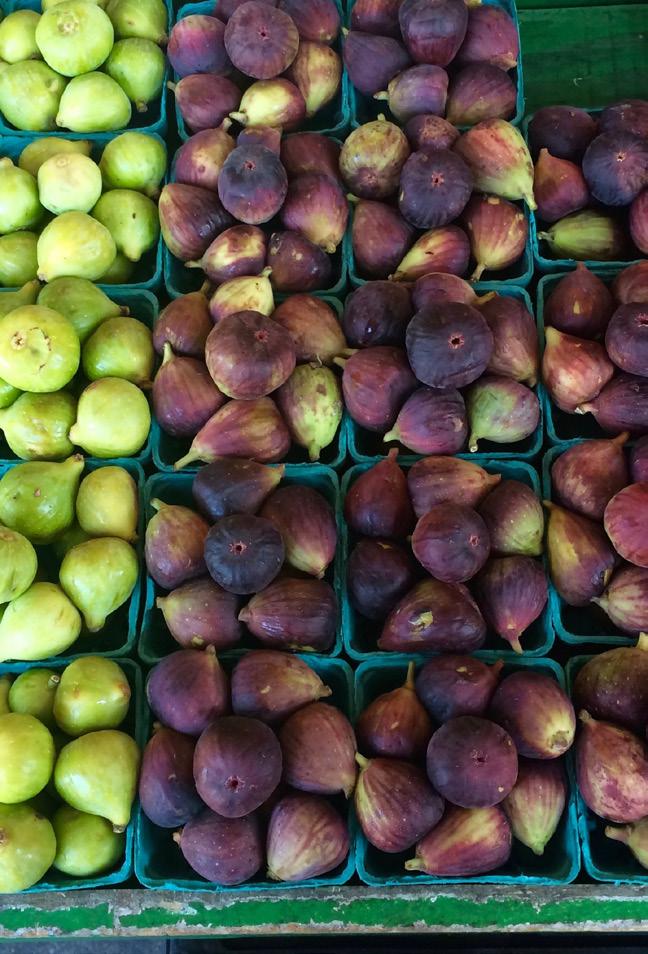
6 minute read
Buying Fresh Plant Foods On A Budget
Photo by www.zanda. photography

Advertisement

Top: Photo by Bodie Pyndus Unsplash Left: Photo by Anne Preble
1. YES, LESS IS MORE
When you feel full, stop eating! Many people eat way beyond the point of being satisfied. And don’t force kids to eat when they’re not hungry. Buy a good amount of healthy produce that attracts you. Then, by keeping your food simple with uncomplicated combinations, you’ll know when you’ve had enough. Keeping food simple and eating less is far easier on your digestive system, too.
When transitioning from a processed-food diet to a lifestyle that’s plant-based and loaded with fresh food, you’ll see a decrease in your shopping bills, too, because the packaged foods can be very pricey. If you follow the following additional tips when purchasing fruits and vegetables, you’ll save even more.
2. GROW YOUR OWN FOOD
This option allows you to get your hands dirty! With a garden full of beautiful, colorful fruits and veggies, you’re able to eat healthfully for only the cost of the seeds as well as gain great gardening skills. Although you might not be able to feed your entire family for months on end from your garden, every little bit counts! If time or space is a concern for you, bring your garden inside. You can grow delicious and fresh-smelling herbs to enhance any dish you create. Plus, growing sprouts or small greens can save a great deal of money, and you can do it almost anywhere there’s sunlight. Sprouts like mung beans are especially easy and fun to grow with the help of children, right on the kitchen counter.
3. BUY YOUR RAW FOOD LOCALLY
Some of the fancy farm shops price their raw fruits and veggies at a premium, but the local farmers often have surplus food that they need to sell, and they also need community support. Find out which ones grow organically and go and talk with them. This produce is twice as nutritious at half the price, and you’re able to support local farmers with a total plus! I purchase a bag of two large organic lettuces from the local farmer — lettuces I can trust are organic, for the same price that one would cost at the health food store.
4. FORAGE! RAW FOOD IS EVERYWHERE
Foraging is the method with which you find food for free, courtesy of Nature. When foraging, however, be absolutely
certain that you are collecting food that is safe and edible. It’s a good idea to go out in the woods, or another unsprayed area, with a knowledgeable forager at least a couple of times before going out on your own, and to purchase books that show accurate pictures of wild edibles. This farm-to-table trend is a way to collect local available plants in an environmentally responsible way.
5. DON’T BE AFRAID TO FREEZE FOODS FOR
SPECIAL TREATS
If you have bananas that are spotted but not yet completely black, take off the peel and throw them in the freezer in a glass dish. Within a few hours, you have a fantastic base for a smoothie!
When any fruit is getting too ripe, you can keep it in the freezer. Then it will be ready for a refreshing and satisfying smoothie anytime. Fruit should be ripe when eaten. Bananas should have plenty of black dots on them. Buy extra of whatever really ripe fruit is cheap at the store that day and freeze it. It’ll be great for banana ice cream, too!
6. USE A SHOPPING LIST
This will help you stay on budget and resist those impulse purchases. Plan in advance to buy what you’ll need for the next couple of days, and list those ingredients accordingly.
Also, don’t go to the grocery store hungry, as this will practically ensure that you walk out with more than you needed.
7. KEEP THE CHEAP ON HAND!
I mean your main staples, such as apples, oranges, and bananas. These three essentials are items that won’t make you feel like you’re breaking the bank.
8. BUY SEASONALLY
Foods in season will often cost less, so think ahead and stock up on fruits and veggies to freeze for the off season. For example, in the summertime, watermelon can be fairly inexpensive; eat it frequently then, because it’s loaded with nutrition, and freeze some to eat in the later months, when it’s not in season and will be much more pricey.
9. TAKE CARE OF BUSINESS AT HOME
Stop buying fresh produce and throwing much of it away! Instead, start learning the tricks to saving it from going bad.
Learn to store certain food items in their proper places. Treating your food in budget-friendly ways will help keep it fresher longer.
This might sound easy, but it can be a little more complicated than you might think. Some foods shouldn’t even be stored with others. For example: Keep fruits and vegetables separate, in different drawers, because the ethylene can build up in the fridge, causing spoilage. For further storage tips check out this chart.
Photo by Devin Rajaram Unsplash



10. BUY IN BULK
Buying in bulk can make a huge difference in your shopping bill in the long run. The overall price of fruits or vegetables in a bulk purchase will be less than purchasing them individually. Many stores give an additional 10% or 20% off for produce purchased by the case. If there’s a food cooperative in your area, join it! You’ll usually be asked to pay a onetime initiation fee to become a member, and then you contribute to the Coop by working there once a month for a few hours. In return, you get a percentage off of all your food bills whenever you shop there.
Receiving a weekly discount can make a huge difference in monthly costs. Twenty-eight years ago, I joined the Hungry Hollow Food Coop in Chestnut Ridge, New York. I paid a $100 fee to become a lifelong member, and I used to work there three hours a month; in later years, I recycled all their plastic bags at the Ramsey Recycling Center. In return for being a member, I receive 10% off all my grocery bills when shopping. They took away the 10% off a couple of years ago, but the new manager is thinking of bringing it back. This makes a difference in our monthly bill since I shop at this store two to three times a week.
12. INVEST IN YOURSELF
This last and final step focuses on you, because when you start to buy more raw plant foods, you are inevitably buying fewer unhealthy processed foods.
There’s nothing more important than investing in your health through the food you choose to eat. Eating raw will provide you with more energy and a sense of clarity that we all need to enjoy life: In the long run, you become the investment! Feed your body the best possible food, and the rest will follow.
HELPFUL LINKS
http://www.rawbc.org/eating-raw-food-on-a-budget/ http://shazzie.com/blog/10-rawfood-on-a-budget-tips/ http://www.sparkpeople.com/resource/nutrition_articles.asp?id=1103&page=2 http://www.SuperHealthyChildren.com/Blog
ABOUT THE AUTHOR
Karen Ranzi, MA, has been a leading expert in the field of plant-based and raw food nutrition and child development for over two decades. She healed her son of asthma, chronic ear infections, and multiple food allergies in 1994 through raw, living plant foods. She is the author of the ground-breaking book Creating Healthy Children and a second book, Raw Vegan Recipe Fun for Families. To find out more, see SuperHealthyChildren.com. Karen is vegan since 1989 and raw vegan since 1994. She is Director of the Raw Vegan Coaching Certification Course at FeelFabulouswithFood.com. She shares her articles and tips through her blog and her monthly newsletter at SuperHealthyChildren.com.
FeelFabulouswithFood.com SuperHealthyChildren.com
Ranzi, Karen. Creating Healthy Children: Through Attachment Parenting and Raw Foods. Ramsey, NJ: SHC Publishing, 2010. Rollins, Brandi. Raw Foods on a Budget. China: Raw Foods on A Budget, 2011.










